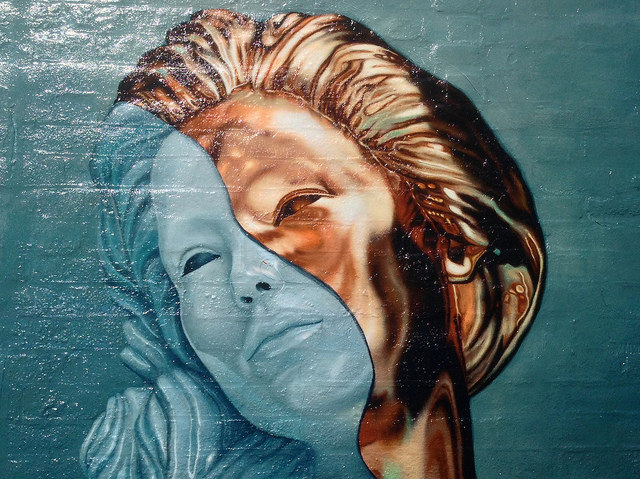Psychological Disorders
Introduction to Personality Disorders
What you’ll learn to do: describe and differentiate between personality disorders, including borderline and antisocial personality disorder
Individuals with personality disorders exhibit a personality style that is inflexible, causes distress and impairment, and creates problems for themselves and others. The DSM-5 recognizes 10 personality disorders, organized into three clusters. The disorders in Cluster A include those characterized by a personality style that is odd and eccentric. These include paranoid, schizoid, and schizotypal disorders. Cluster B includes personality disorders characterized chiefly by a personality style that is impulsive, dramatic, highly emotional, and erratic (antisocial, histrionic, narcissistic, borderline) and those in Cluster C are characterized by a nervous and fearful personality style.
Two Cluster B personality disorders, borderline personality disorder and antisocial personality disorder, are especially problematic. People with borderline personality disorder show marked instability in mood, behavior, and self-image, as well as impulsivity. They cannot stand to be alone, are unpredictable, have a history of stormy relationships, and frequently display intense and inappropriate anger. Genetic factors and adverse childhood experiences (e.g., sexual abuse) appear to be important in its development. People with antisocial personality display a lack of regard for the rights of others; they are impulsive, deceitful, irresponsible, and unburdened by any sense of guilt. Genetic factors and socialization both appear to be important in the origin of antisocial personality disorder. Research has also shown that those with this disorder do not experience emotions the way most other people do.
Learning Objectives
- Define personality disorders and distinguish between the three clusters of personality disorders
- Identify the basic features of borderline personality disorder, and its etiology
- Describe the basic features of antisocial personality disorder and its etiology
Licenses and Attributions (Click to expand)
CC licensed content, Original
- Modification, adaptation, and original content. Provided by: Lumen Learning. License: CC BY: Attribution
CC licensed content, Shared previously
- Personality Disorders. Authored by: OpenStax College. Located at: https://openstax.org/books/psychology-2e/pages/15-11-personality-disorders. License: CC BY: Attribution. License Terms: Download for free at https://openstax.org/books/psychology-2e/pages/1-introduction
- Photograph of mural. Authored by: Alan Levine. Located at: https://www.flickr.com/photos/cogdog/22453413976. License: CC BY: Attribution


